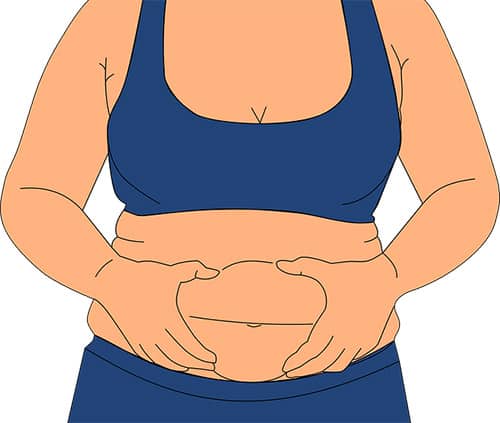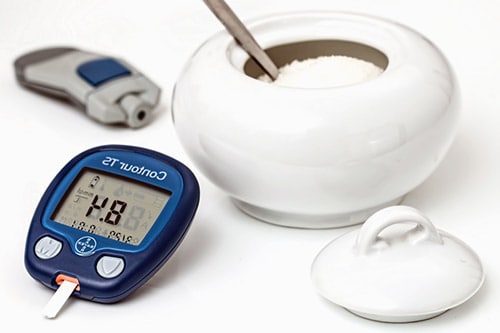Sugary Facts
https://www.thediabetescouncil.com/45-alarming-statistics-on-americans-sugar-consumption-and-the-effects-of-sugar-on-americans-health/
- In 1915, the average sugar consumption per person was 17.5 pounds. As of 2011, the number rose to 150 pounds of sugar per person annually. (Avail Clinical Research)
- In 2016, the U.S. government has recommended a person’s daily added-sugars intake to 10% of a day’s total calories intake (That means for a 2,000 calories diet, a person should consume no more than 13.3 teaspoons of sugar in a day). (Statnews.com)
- The number of fast food restaurants has doubled between 1970 to 2010. (US Department of Agriculture)
- It has been found that added sugar and fatty food empty calories make up of 40% of the average American daily intake calories. (Journal of American Dietetic Association “Dietary Sources of Energy, Solid Fats, and Added Sugars Among Children and Adolescents in the United States”)
- The current average sugar consumption per day is 25.28 teaspoons. That is 11.98 teaspoons more than the US government recommendation. (Washington Post)
- About 90% of individuals in the United States eat more than the government 10% healthy guideline on a daily basis. (HHS.gov)
- The top 10 percentile sugar consumers take in an average of 40% their daily calories from sugar. (Medscape Journal of Medicine “Dietary Fructose Consumption Among US Children and Adults: The Third National Health and Nutrition Examination Survey”)
- The American consumption of fructose has significantly jumped from 37g per day in the 1970s to a record high of 62.5g per day in the 2000. Since the discovery of high fructose intake associating with fatty liver, increased plasma triglycerides, insulin resistance, and obesity, the U.S. government implemented various campaigns and regulations to lower the use of high-fructose corn syrup. As of 2016, the US fructose consumption has dropped to 41.4g per day per capita. (Statistica)
Sugar and Connection with Obesity

- According to the National Health and Nutrition Examination Survey in 2014, more than 2 in 3 American adults was overweight, and 1 in 13 was obese. (National Institute of Diabetes and Digestive and Kidney Diseases)
- Correlation studies have found that adolescents who are overweight have 70% risk of turning into overweight or obese adults. (Journal of American Medical Association “Overweight and Obesity Among US Children, Adolescents, and Adults”)
- Large amount of clinical studies have found consistent data that the body weight changes correlate directly with increasing or decreasing intake of sugars. Just by decreasing 5% of sugar intake, individuals were witnessed to lose an average of 0.80kg of their body weights. And by increasing sugar intake by 5%, individuals were seen to gain an average of 0.75kg. (BMJ Research)
- It is estimated that $190.2 billion of the United States annual healthcare expenditure is related to obesity-related illnesses. (Institute of Medicine of the National Academies. “Accelerating Progress in Obesity Prevention: Solving the Weight of the Nation”)
- In 2018, the projected cost for treating obesity-related illnesses will be 21% of the total healthcare expenditure of $344 billion. (National Association for Sport and Physical Education “2010 Shape of the Nation Report”)
- Survey studies have found out that obese individuals have an average 42% higher medical expense than individuals with normal weight. It works out to roughly $1,429 more per year. (Centers for Disease Control and Prevention)
- Sugary drinks contributes greatly to the surge of daily sugar intake by Americans. In the 1970s, sugary drinks only occupied 4% of average daily calories intake. By 2001, the amount rose to 11%. In 2008, 91% of American children from ages 6 to 11 were consuming as much as 60% of their daily calories intake from sugar-sweetened beverages. (Harvard School of Public Health)
- Although the average consumption soft drinks have decreased to a new low in years in 2015 (40.7 gallons per person annually), many people have increased their consumption of energy drinks which now make up more than 10% of the American soft drink industry. (Harvard School of Public Health)
- A 20 oz. of Coke contains about 16 teaspoons of high fructose corn syrup. In comparison, the average 20 oz. of energy drink can contain 54 to 62 grams of high fructose corn syrup. According to market survey, more than 29 billion gallons were consumed by Americans in 2016. (National Center for Complementary and Integrative Health)
- Fructose is known to induce leptin resistance and greatly increase the risk of developing obesity. As leptin plays an important role in regulating hunger and appetite, suppressing leptin release can produce “bottomless” eating problem and increase the risk of developing obesity. As fructose became a more popular sweetener in beverages, the amount of fructose consumed per capita rose from 0.23 kg in 1970 to 28.4 kg in 1997. (Nutrition Metab “Health Implications of Fructose Consumption: A Review of Recent Data”)
Sugar and Connection to Health
- A 15-year longitudinal study published in JAMA Internal Medicine found that individuals had more than twice the risk of dying from heart disease if they consumed 25% or more of their total daily calories intake from sugar. (JAMA Internal Medicine)
- Fructose is known to increase uric acid buildup in the body. Research studies have shown that men who drink 2 or more servings of soft drinks a day are 69% more likely to develop gouts than men who drink 5 to 6 servings a week. (BMJ “Soft Drinks, Fructose Consumption, and the Risk of Gout in men: Prospective Cohort Study”)
- High sugar intake can lead to chromium deficiency. Because chromium is an important mineral that helps regulating blood sugar level, the deficiency increases the chance of individuals to suffer from hyperglycemia and even develop pre-diabetes symptoms. Research studies have shown that high sugar diets can increase urinary Chromium loss by as much as 300%. (PlumX Metrics “Effects of Diets High in Simple Sugars on Urinary Chromium Losses”)
- Sugar is known to suppress immune system. Just by consuming 100 grams of sugar (similar amount found in a medium soft drink) can already suppress white blood cells functioning by 40% for at least 5 hours. (Daily Mail)
- Sugar accelerates aging process. Science research studies have found that sugar speeds up the cell aging process. By measuring the cell telomere lengths, scientists can find out the aging speed on an individual. In a study of 5,309 individuals, those who drink sugary drinks on a regular basis are shown to have much shorter telomere lengths than individuals who do not drink sugary drinks. (AJPH “Soda and Cell Aging”)
- Sugar can increase the risk of cavities as it can drop the oral environment to an acidic pH level of less than 5.5 within 30 minutes of consumption, allowing bacteria to demineralize the teeth surfaces. (Oxford Academic)
- Glucose is known to amplify cortisol secretion during a psychological stress event. Research tests was able to measure the cortisol level before and after a stressful exercise. Unlike protein and fat, glucose increased the cortisol level by almost 4 times from 5 nmol/l to 23nmol/l. (Hormones and Behavior)
- High fructose consumption is also linked to non-alcoholic liver disease. Longitudinal studies have found that daily fructose consumption is directly related to increased risk of liver inflammation in individuals that are already suffering from fatty liver disease. (Hepatology “Increased Fructose Consumption Is Associated with Fibrosis Severity in Patients with Nonalcoholic Fatty Liver Disease”)
- High intake of fructose is linked to significant increased risk of developing certain type of cancer such as brain cancer, pancreatic cancer (up to 53% increased risk), oral cancer (increased 10 to 15%), and prostate cancer (increased 33% risk). (Journal of the National Cancer Institute) (Oral Oncology) (Cancer Research)
Sugar and Connection to Nutrient Deficiency
- Scientific researches points out that 50 grams of fructose (approximately the amount of fructose in 1 24 oz. soda) can already be able to drain the liver ATP that is responsible for metabolism, turning nutrients into usable energy for the body, and detoxifying the body of waste products. Consequently, without the needed ATP, the liver cannot process the nutrients in food, and the body becomes devoid of vitamins and minerals. Sensing the lack of energy, the body will increase hunger signals and stimulate appetite for more calories intake. (Open Heart “Added Sugar Drive Nutrient and Energy Deficit in Obesity: a New Paradigm”)
- The average individual in America takes in about 83.1g of fructose per day, and more than 20% of the United States population takes in more than 100g of fructose per day. (Open Heart “Added Sugar Drive Nutrient and Energy Deficit in Obesity: a New Paradigm”)
- Between 2011 and 2014, 63% people under the age of 16 and 49% of people above the age of 16 were consuming sugar-added beverage on a daily basis. (Centers for Disease Control and Prevention)
- Market survey studies have found American soft drinks to contain as much as 65% fructose. (Basic Nutritional Investigation “Fructose Content in Popular Beverages Made with and without High-Fructose Corn Syrup”)
- The habit of sugary drink consumption differs across different regions of the United States:
- 68% of adults in Northeast consume at least 1 drink per day
- 67% adults in the South consume at least 1 drink per day
- 61% adults in the West consume at least 1 drink per day
- 59% adults in Midwest consume at least 1 drink per day
(Centers for Disease Control and Prevention)
- Clinical research studies have found that as much as 50% of the American population is unable to digest 25 g of pure fructose. The symptoms are diarrhea, bloating, indigestion, and damage to the stomach and intestinal lining causing poor absorption of nutrients. (Critical Review of Food Science Nutrition “Fructose Malabsorption and Intolerance: Effect of Fructose with and without Simultaneous Glucose Ingestion”)
Sugar and Connection to Diabetes

- According to multiple longitudinal case studies that involved 310,819 participants, the results showed that those who consumed 1 to 2 servings of sugary beverages per day had an increased 26% risk of developing type 2 diabetes. (American Diabetes Association)
- Based on market research, approximately 50% of the American population drink at least 1 to 3 servings of sugary beverage per day. That means about half the United States population have at least 26% increased chance of developing type 2 diabetes. (American Cancer Society)
- A research study have shown that individuals who increased their sweet beverage consumption from 1 drink per week to 1 drink per day had an average weight gain of 4.03 kg. They were also 50% more likely to develop type 2 diabetes than individuals who consume less than 1 sugary beverage per month. The finding suggests that daily intake of sweet beverage with high amount of fructose can greatly increase weight as well as significantly raises the risk of developing type 2 diabetes. (JAMA Network)
- Just by decreasing sugar intake and increasing fiber intake can significantly decrease an individual’s blood sugar level and insulin level, and improve body mass index and visceral adipose tissue mass. An intervention studies demonstrated just by reducing the consumption of 1 can of soda per day and increasing a cup of beans in diet, all participants became much healthier over the course of 16 weeks. Their blood glucose level decreased by 15%, insulin level decreased by 9%, body mass index decreased by 2%, and visceral adipose tissue mass decreased by 10%. (JAMA Pediatrics)
- Different type of sugars have different effects on diabetes risks. Studies have shown that sucrose, lactose, and maltose were not associated with diabetes, whereas glucose and fructose were the main risk concerns. In a 12-years longitudinal study, the two combination increase the risk by as much as 86%. (Journal of Nutrition)
Sugar and Connection with Brain Deterioration

- As of 2018, there are 5.7 million individuals in the United States living with Alzheimer’s disease. As much as 1 in 3 seniors passed away with the disease or some form of dementia. It is estimated that as much as 14 million people will be affected by the disease by 2020. (Alzheimer’s Association)
- Longitudinal clinical study that spanned over 10 years found that individuals with high blood sugar had a much faster cognitive decline rate than individuals with normal blood sugar range. Those who suffered from type 2 diabetes at the beginning of the study were twice as likely to develop Alzheimer’s disease than healthy individuals. (The Atlantic)
- It has been found that high-carb diets can increase an individual’s risk of developing dementia by 84%. (Biomed Research International)
- Individuals with higher blood sugar level have more brain plaques than healthy individuals. (ScienceDaily)
- Research studies have found that hyperglycemic conditions have 40% risk of damaging cerebral blood vessels and increasing plaque buildup in the brain. (ScienceDaily)

Comments